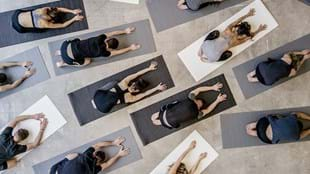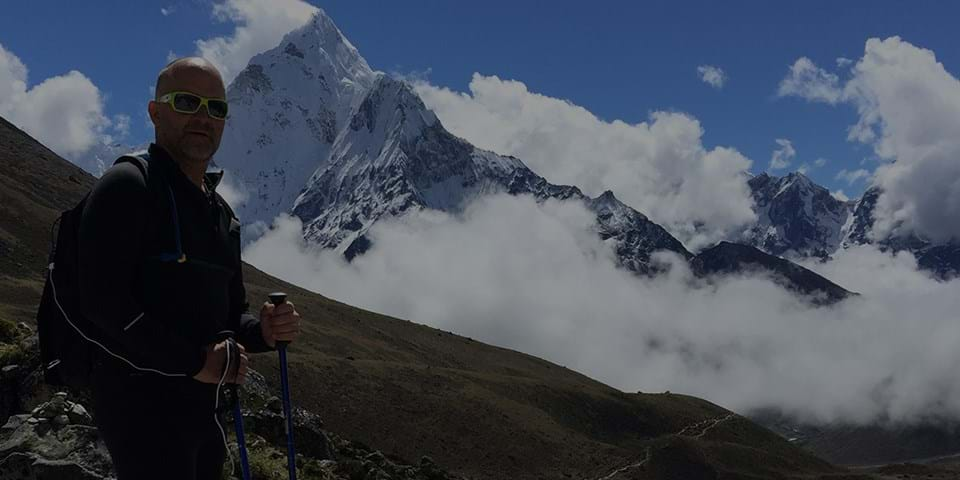Yoga has been around for thousands of years, but when did it really become the subject of scientific inquiry?
The first scientific clinical trial on yoga was done in 1967, which was a study into the effects of yoga on hypertension, but in the last ten years yoga research has tripled. But these studies are looking at clinical populations, such as the benefits of yoga for patients who are undergoing treatment for cancer, for mental health, for cardiovascular disease, for respiratory disease, diabetes, chronic lower back pain, for arthritis and others.
When it comes to the mechanisms involved, there’s evidence that, for instance, yoga decreases stress hormones like cortisol in the body, that it decreases blood pressure in people with hypertension, and lowers the blood sugar level in people with non-insulin dependent diabetes. But while the results are promising this is a new field, and to say that yoga can do this or that, we really need a body of evidence. We’re not quite there yet – yoga research is a relatively new field, and there are some methodological challenges.
It would be challenging, presumably, to do a large-scale randomized control (RCT) on the benefits of yoga.
Yeah, with RCTs you have a placebo control that looks and tastes and has the same dose as an active ingredient. In a yoga trial you can’t do that – people know whether or not they’re doing yoga, so that presents opportunities for bias.
We’re also dealing with an intervention that involves movement, breathing, and a meditation/mindfulness component. Science has a tendency to be reductionist, but we can’t really separate these different aspects, because then it’s no longer yoga. It’s also complicated by the fact that the different studies into yoga are looking at different styles of yoga, with different combinations of each component, for different periods of time. So there’s a lot of variability across studies.
At Johns Hopkins University, you researched the benefits of yoga for the visually impaired?
What I was looking at was balance. To balance we use the visual system (our eyes) the vestibular system (the ears) and the somatosensory system (the body’s sense of where it is in space). I was looking at whether, if you’re not getting input from your visual system, could you compensate by using the other sensory inputs that yoga acts upon. And, I was able to show in a pilot RCT study that you could. But the bigger picture is how it might reduce falls or fall risk in the ageing, visually impaired population, which is a rapidly growing population – so using yoga to help people improve balance will be good for the ageing population in general, not just the visually impaired.
We know exercise is good for us – is there anything particularly distinct about yoga?
The research has focused on the effect of yoga on a clinical population, and which is a form of yoga that is very individualized – which is different from the yoga you do in a studio, or in a gym, which is usually yoga for the masses and mostly aimed at healthy individuals.
The other thing is that yoga practice has a mindfulness or meditative component, and/or a breathing component, which is designed to elicit a relaxation response. When we think of exercise, we tend to think of some aerobic activity like running or cycling, when you’re usually trying to increase your heart rate. In yoga, the opposite is true – it tends to slow your heart rate and your breathing.
The other aspect of yoga for clinical populations is accessibility. If you’re legally blind, for instance, going for a run or to the gym can be very challenging. But while you might need the guidance of a teacher to show you how to do yoga, you can do a very simple practice at home. And if it’s just breathing, it’s accessible to everyone.
Much of the yoga practiced in the West is focused on the physical side – is that a good thing or a bad thing?
I have conflicting thoughts on this. The Yoga Sutras, a seminal philosophical text on yoga, states that the purpose of yoga is to steady the mind. So, on the one hand yoga can be a practice towards self-realization and peace. Some disciplines, like Ashtanga, are very physical, but breathing is the main focus, so it becomes a moving meditation – keep steady, stay on the breath, try not to think about breakfast which we all do. Well I do, if I’m doing yoga in the morning. So, even though it can be very physical, there is a quality of a “practice” to steady the mind using the body and the breath. Oftentimes, this key element is forgotten in the West, and the focus becomes purely physical.
For me yoga does have a very spiritual quality to it, but I know that doesn’t apply to everybody. And I believe we all have to start somewhere and any entry into yoga is a good thing, regardless of a person’s initial goals.
What about that idea that certain poses will open up certain emotional blocks?
Some people buy into that and some people don’t. There is evidence that the physiological systems of people who’ve had a lot of trauma – such as people with PSTD, or people who’ve had really horrific accidents, or veterans from war – are stuck in fight or flight mode. Then, when we start working on our bodies and regulating our breathing along with that, it helps reset the physiological system.
Explain the Science Sutras, the organization you founded to promote research literacy among practitioners in the mind-body community.
As mentioned, a lot of the research done on these therapies/practices has mostly been done in clinical populations, to make sure it’s safe and to provide enough evidence to support policy change – so that, for instance, yoga would be covered by health insurance as a form of therapy.
Research literacy is about understanding the research. If you’re working with someone who has a clinical condition that is hard to diagnose or hard to treat, who has come to you because they’ve read something on the internet about how yoga will help them, it’s incumbent on the yoga therapist to understand the science – what research is out there to support a yoga practice, whether there any contraindications that they should be aware of, what are the latest findings, to be able to critically appraise the quality of the study and apply the information in way that is integrated with the yogic approach, based on the individual’s needs.

Pam Jeter is a thought leader in yoga therapy and research literacy with a PhD in cognitive science. For her post-doctoral work at the Johns Hopkins Wilmer Eye Institute she looked at the therapeutic benefits of yoga for individuals with severe vision loss. As founder of The Science Sutras she aims to promote research literacy among the mind-body practitioner community.
- Yoga should be treated like any other exercise regime and done in a well-regulated and safe environment, as this recent study of pain and injury highlighted.
If you want more health and fitness inspiration simply sign up to Fit Planet and get the freshest insights and advice straight to your inbox.







